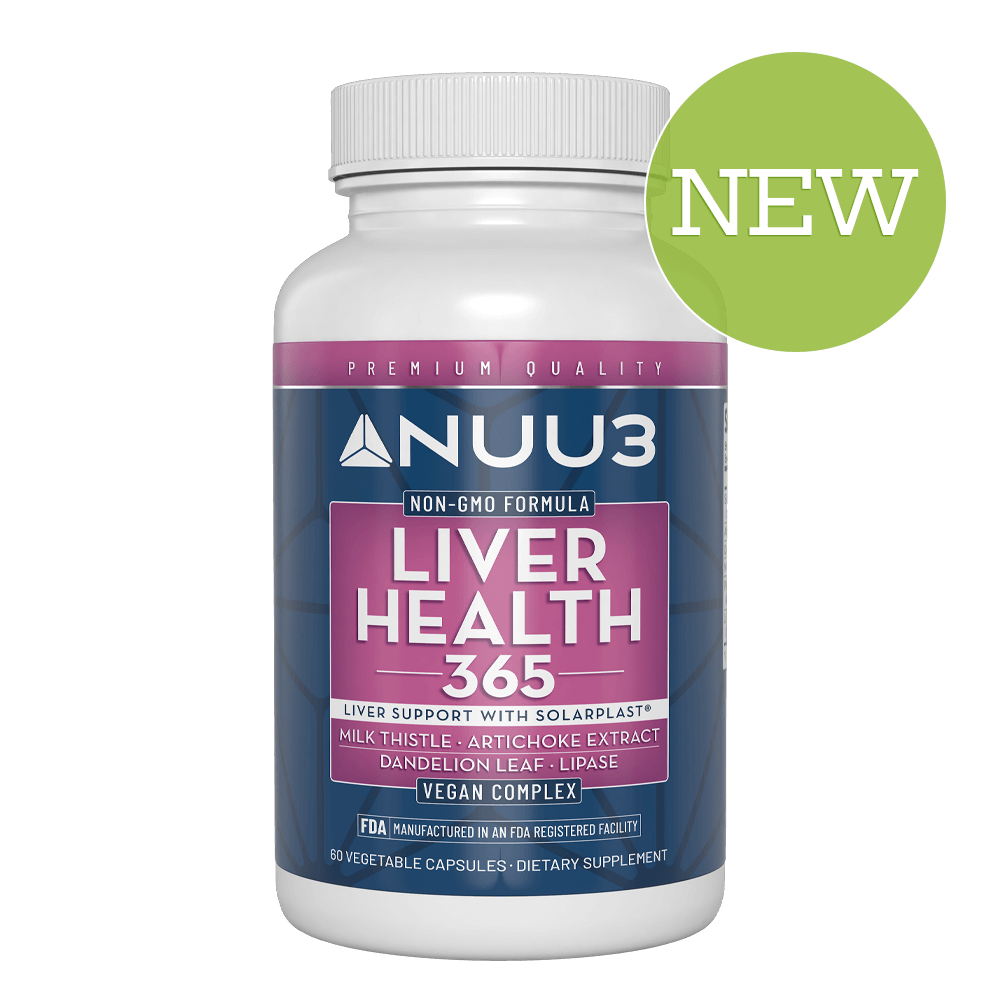What Are the Types of Immunity and How Do They Help Us?

“Boosting” the immune system has become a buzzword in the wellness community. You’ll often find supplements claiming to “boost” your immune system or offer support for the cold and flu seasons as they sneak up on us.
Before you stock up on alleged “immune boosters,” it’s important to understand what immunity is. Our immune systems are quite intricate, so if you’ve ever found yourself asking, “What’s immunity?”, “What are the different types of immunity?”, “What does my immune system do?” or “How can I support my immune system?” stick around because we’ll break down each question.
What Is Immunity?
Immunity refers to a state in which your body can resist and protect against toxins and pathogens such as viruses, bacteria, parasites, and fungi. You develop immunity against illness by stimulating your innate and acquired immune system defenses. We’ll explore the intricacies of the two types of immunity in a later section.
Immunology is a specific branch of medicine that studies various aspects of the immune system and how it functions. Immunologists are medical practitioners who specialize in the treatment of immune system disorders. Examples of conditions that immunologists treat include autoimmune diseases, mast cell activation syndrome (MCAS), asthma, sinusitis, eczema, and allergies.
Immunity and Its Types: Innate and Acquired
There are two main types of immunity, known as innate and acquired. You may also hear acquired immunity referred to as adaptive immunity. In this article, we will refer to it as acquired immunity.
1. Innate Immunity
Innate immunity refers to the physical barriers and defense mechanisms you are born with that are your first line of defense against pathogens. These include skin, mucous membranes, chemicals, pH, temperature mediators, specialized cells, and inflammation. Specialized cells involved in innate immunity include macrophages, neutrophils, eosinophils, basophils, mast cells, monocytes, and natural killer cells. [1]
2. Acquired Immunity
Your acquired, or adaptive, immunity kicks in when your innate immune system defenses aren’t strong enough to eradicate pathogens on their own. In acquired immunity, your body detects and recognizes something as “non-self” or a pathogen. Your body produces antibodies in response to the pathogen invasion that was not completely taken care of by innate immune system defenses.
-
Your body is exposed to pathogens such as viruses, bacteria, parasites, or fungi.
-
After detecting the pathogen, your immune system presents it to a particular type of white blood cell called a B cell.
-
Your B cells then multiply and form plasma cells that produce antibodies or memory B cells.
-
These antibodies can either destroy the pathogen directly or latch onto it to signal to other immune cells that it needs to be destroyed.
-
After your body eradicates the pathogen, memory B cells stay on standby in case the same pathogen is reencountered in the future.[2]
Innate vs. Acquired Immunity: What is the Difference?
There are a few differences between innate and acquired immunity. One of the key differences between the two types of immunity is that innate is non-specific, while acquired is specific.
When your innate immune system detects foreign invaders, it doesn’t differentiate what type of pathogen it is. Instead, it recognizes specific molecular patterns on the pathogen's surface and determines it as “non-self.” A cascade of cellular immune responses ensues in an attempt to eradicate the infection as a whole rather than the specific pathogen itself.
In contrast, acquired immunity is specific. It recognizes certain antigens that are specific to a type of pathogen. After the body detects a particular antigen, it employs immune cells that attack that specific pathogen. B and T cells are the main specialized cells involved in acquired immunity.
Another difference between innate and acquired immunity is cellular memory. In innate immunity, the cells involved don’t keep a memory of the pathogen they encountered. In acquired immunity, B cells can replicate into B memory cells. These cells keep a memory of a specific pathogen they encountered, allowing a more rapid response in the future if you’re exposed to it again [3] B memory cells can stay in the body for decades.
Types of Innate Immunity
Both innate and acquired immunity can be broken down into different types. Types of innate immunity include species, race, and individual.
Species immunity is when a particular species is susceptible to an illness while another species is immune. For example, humans are susceptible to anthrax, while birds are resistant. Another example could include humans being susceptible to measles while animals don’t contract or spread the illness.
Racial immunity is when a particular race is more susceptible to an illness than others. For example, some scientists believe a certain African race is more immune to yellow fever and malaria in comparison to Caucasians. However, there is ongoing scientific debate about this phenomenon. Some research [4] suggests certain African races are more immune to yellow fever due to continued exposure. It’s essential to address the nuances of racial immunity to prevent disparities in healthcare.
Individual immunity is when individuals across races are more susceptible or immune to certain infections. An example would be individuals with a specific genetic predisposition that makes them resistant to malaria.[5]
Types of Acquired Immunity
Acquired immunity can be broken down into two types: active and passive. Active acquired immunity results from your body producing antibodies in response to exposure to a specific pathogen.
Active acquired immunity can then be broken down into natural and artificial. Natural active immunity results from spontaneous exposure to infections. Examples of natural active immunity include catching a cold from your co-worker or your child catching a stomach bug going around her school.
Artificial active immunity builds resistance to an antigen through intentional exposure, such as vaccination. Examples of artificial active immunity include getting the flu or polio vaccine.
Passive acquired immunity is when you are given antibodies to a certain disease rather than producing them on your own. An example of passive acquired immunity includes antibodies passed from mother to baby through the placenta and breast milk.
Innate vs. Acquired Immunity: Which is Better?
The two types of immunity have respective benefits and drawbacks. The benefits of innate immunity include a rapid response time and the ability to put up a first line of defense against a unique or new pathogen spreading around. However, innate immunity is limited in power, considering it can only recognize a few microbial structures on the surface of pathogens. This means innate immune defenses aren’t always successful at eliminating infections since they can’t recognize all types of pathogens.
The benefits of acquired immunity include the formation of memory cells and the ability to detect specific pathogens. Unlike innate immunity, which employs broad and non-specific protection against pathogens, acquired immunity can differentiate between more pathogens. This allows it to target specific pathogens through specialized immune cells such as B and T cells. Also unlike innate immunity, acquired immunity involves the formation of memory cells. Some B cells can differentiate into memory cells, allowing them to rapidly respond to the pathogen during subsequent exposures.[6]
Do We Need Both Innate and Acquired Immunity to Stay Healthy?
As previously mentioned, innate and acquired immunity have their respective negatives and positives. We need both to stay healthy.
Our innate immune system provides a great first line of defense against pathogens. It provides four types of barriers: anatomic, physiologic, endocytic, phagocytic, and inflammatory.
The anatomical barriers of innate immunity include skin, hair, and mucous membranes. The physiologic barriers of innate immunity include mucous secretions and chemical secretions. Endocytic and phagocytic barriers include phagocytes and natural killer cells. Lastly, your innate immune system stimulates an inflammatory response as a barrier against pathogens.
Sometimes, the barriers of the innate immune system aren’t enough to eradicate pathogens. When the innate immune system isn’t successful, acquired immunity kicks in. Acquired immunity employs a more specific cell-mediated immune response that produces antibodies and memory cells.
In general, innate immunity is advantageous for quick responses to novel infections, but acquired immunity is advantageous for immunological memory. To improve your health, try Nuu3 Immune Plus. It promotes a healthy immune response and protects against illness & infection.
Which Type of Immunity is Preferred and Why?
Our bodies don’t necessarily have a preference for innate or acquired, considering we need both types of immunity. The innate immune system is more beneficial when we need a more immediate and non-specific response to infection. Acquired immunity is more advantageous for long-term protection against pathogens.
What Is in Acquired Immunity But Not Innate Immunity?
As we discussed earlier, one of the key differences between acquired and innate immunity is the formation of memory cells. When B cells, also called B lymphocytes, encounter a pathogen, they either form into plasma cells that secrete antibodies or memory cells. These memory cells give acquired immunity the advantage of remembering pathogens it’s encountered in the past. This allows it to respond to infection more efficiently in the future.
An example of memory B cells in action would be getting the flu for a second time but experiencing milder symptoms due to the more efficient immune response.
How Does Innate Immunity Help Acquired Immunity?
Innate and acquired immunity work together. Innate immune cells signal to the acquired immune system that an invading pathogen has bypassed the body’s first line of defenses, such as the skin and mucous membranes. They do this through several mechanisms, such as displaying fragments of a microbe protein on the surface of phagocytes and releasing inflammatory proteins called cytokines.[7]
In response to the cell signals from the innate immune system, the acquired immune system kicks into gear and employs its specialized immune cells, including T and B cells.
Frequently Asked Questions
You can refer to the sections below to find answers to commonly asked questions regarding the immune system.
What are the advantages of acquired immunity over innate immunity?
Acquired immunity offers more specialized protection against invading pathogens. Although it takes longer for this leg of the immune system to kick in, when it does, it can carry out more specialized destruction of invading pathogens.
In addition to more specificity than the innate immune system defenses, acquired immunity has a “memory.” In the case of subsequent pathogen exposure, the acquired immune system can amount to an immune response more efficiently than the first time.
What is the interrelationship between innate and acquired immunity?
As previously mentioned, innate and acquired immune system defenses work together. In simple terms, the innate immune system employs specific cells to communicate to the acquired immune system that it needs backup to eradicate a pathogen. The “certain cells” the innate immune system uses to communicate with the acquired immune system include phagocytes and cytokines.
Is inflammation innate or acquired?
Inflammation is most commonly associated with innate immunity. However, both innate and acquired immunity involve inflammatory actions.
When something activates the innate immune system, immune cells secrete inflammatory molecules such as tumor necrosis factor-a (TNF-a), reactive oxygen species (ROS), interleukin-1 (IL-1), and interleukin-6 (IL-6).[8]
Acquired immunity can contribute to inflammation through T cells. When T cells come into contact with cells from the innate immune system presenting a specific pathogen, they secrete cytokines. These inflammatory cytokines help regulate other types of immune cells.[9]
Conclusion
The two types of immunity, innate and acquired, work synergistically to eradicate pathogens and toxins from the body. Both involve intricate defense mechanisms and the recruitment of specialized immune cells. Proper function of and communication between the innate and acquired immune system is essential to survival.
Each process in innate and acquired immune responses requires the presence of various nutrients. You can support your immune system by adopting a nutrient-dense diet. An excellent place to start is incorporating a wide variety of fruits, vegetables, high-quality animal products, and whole grains.[10] Taking a supplement like Nuu3 Nature's Superfuel can help you fill in the nutrients you are missing from veggies and fruits.
If you find it hard to eat a nutrient-dense diet, taking a multivitamin gummies containing immune-system-supporting nutrients can be helpful. Try NUU3 Daily Multivitamin Gummies containing vitamin A, vitamin C, vitamin D, zinc, Iodine, and other ingredients. NUU3 Daily Multivitamin Gummies’ ingredients may protect against free radicals, reduce inflammation, and support immune health. NUU3 Daily Multivitamin Gummies have yielded great customer results, but we suggest consulting with your doctor before implementing any dietary supplement.
Aside from nutrition, you can adopt lifestyle habits that cultivate a healthy body and immune system. These habits include sticking to a consistent sleep schedule, managing stress, and exercising regularly.
References
1] ↑ Marshall JS, Warrington R, Watson W, Kim HL. An introduction to immunology and immunopathology. Allergy, Asthma & Clinical Immunology. 2018;14(Suppl 2):49. doi:10.1186/s13223-018-0278-1
2] ↑ Cleveland Clinic. Antibodies: Definition, types & function. May 6, 2022. Accessed September 15, 2023. https://my.clevelandclinic.org/health/body/22971-antibodies.
3] ↑ InformedHealth.org [Internet]. The innate and adaptive immune systems. In: InformedHealth.org [Internet]. Institute for Quality and Efficiency in Health Care (IQWiG); 2006.
4] ↑ Espinosa M. The question of racial immunity to yellow fever in history and historiography. Social Science History. 2014;38(3-4):437-453. doi:10.1017/ssh.2015.20
5] ↑ Kariuki SN, Williams TN. Human genetics and malaria resistance. Human Genetics. 2020;139(6-7):801-811. doi:10.1007/s00439-020-02142-6
6] ↑ McDade TW, Georgiev AV, Kuzawa CW. Trade-offs between acquired and innate immune defenses in humans. Evolution, Medicine, and Public Health. 2016;2016(1):1-16. doi:10.1093/emph/eov033
7] ↑ Janeway CA, Travers P, Walport M, Shlomchik MJ. Principles of Innate and Adaptive Immunity. In: Immunobiology: The Immune System in Health and Disease. 5th ed. Garland Science; 2001.
8] ↑ Sun L, Wang X, Saredy J, Yuan Z, Yang X, Wang H. Innate-adaptive immunity interplay and redox regulation in immune response. Redox Biology. 2020;37:101759. doi:10.1016/j.redox.2020.101759
9] ↑ Dong C. Cytokine regulation and function in T cells. Annual Review of Immunology. 2021;39:51-76. doi:10.1146/annurev-immunol-061020-053702
10] ↑ Harvard T.H. Chan School of Public Health. Nutrition and immunity. The Nutrition Source. December 5, 2022. Accessed September 15, 2023.https://www.hsph.harvard.edu/nutritionsource/nutrition-and-immunity/.











